Disclaimer: This is a preview of a work-in-progress. All gameplay was via Tabletop Simulator, and all artwork is subject to change before final production.
The Tu’x Rebellion is a competitive, yet co-operative game, set in a fantasy world. It combines Euro-like resource management, and outright war-gaming, in a grand scale campaign.
Over the past couple of months I’ve been talking to the game’s creator – Matt Hanna of Maniple Games – and we met online to play the game on Tabletop Simulator. Those who know me, know that I’m an out-and-out Euro game fan. I’ve never been into war games, but I’ve often looked at offerings from publishers like GMT with curiosity. Root is my biggest exposure to the genre. Knowing me, I fear that if I started down that rabbit hole, I’d slip a long, long way down it. So let’s call me war-game-curious. The reason for this preamble is because my views and opinions are as a Euro gamer, so bear that in mind.
Taking the bait
The first thing that made me more than a little bit curious about The Tu’x Rebellion is the resource management and tableau-building. I love tableau-building, it’s one of my favourite aspects of a good game, so it hooked me straight in. The continual improvement and snowballing of resources and abilities is right there in this game too, and it feels good to turn cards the right way up (buildings not built yet are turned upside-down) and know that in the following rounds you’ve got more goodies heading your way. But what to do with all this wood, stone, metal and money?
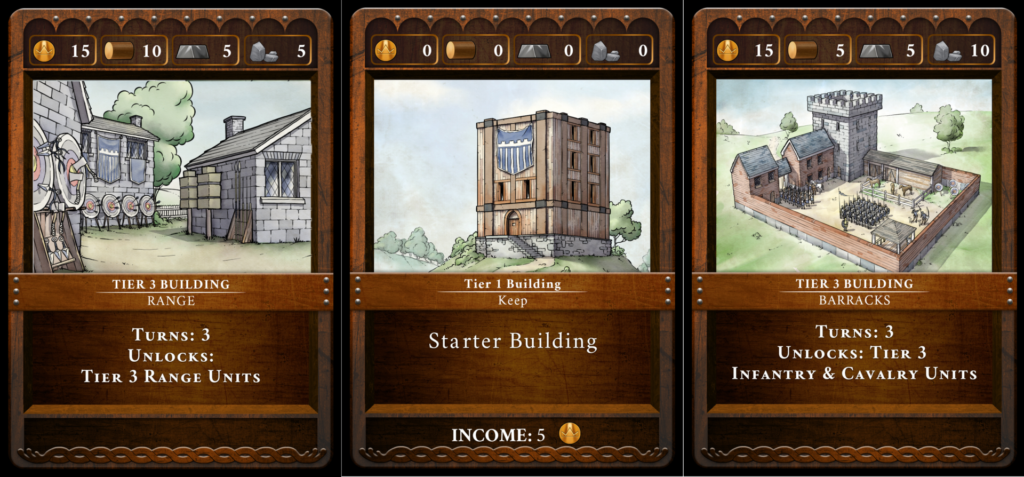
Yeah, you guessed it – you make stuff! Except instead of making statues, fisheries, or farming supplies, like I’m used to, you’re raising an army. Armies, as you’ve probably guessed, are used in the battles which make up the core of The Tu’x Rebellion. When a battle happens, that’s when the really interesting stuff happens, and it makes up the lion’s share of the playtime when the game’s on the table.
Battle lines
Whoever instigates the battle can invite other players to the battle, and each can bring their own units to face off against the various beasts and enemies. This really reminds me of Cosmic Encounter, the classic space game of making alliances then stabbing your friend in the back to win. Right at the top of the review I mentioned that The Tu’x Rebellion is simultaneously a co-operative and competitive game, and that’s where this comes into play. Winning battles earns you Favor points, and Favor points are what you need to win the game. But, if between all of you, you lose two battles, it’s game over. You lose, losers.
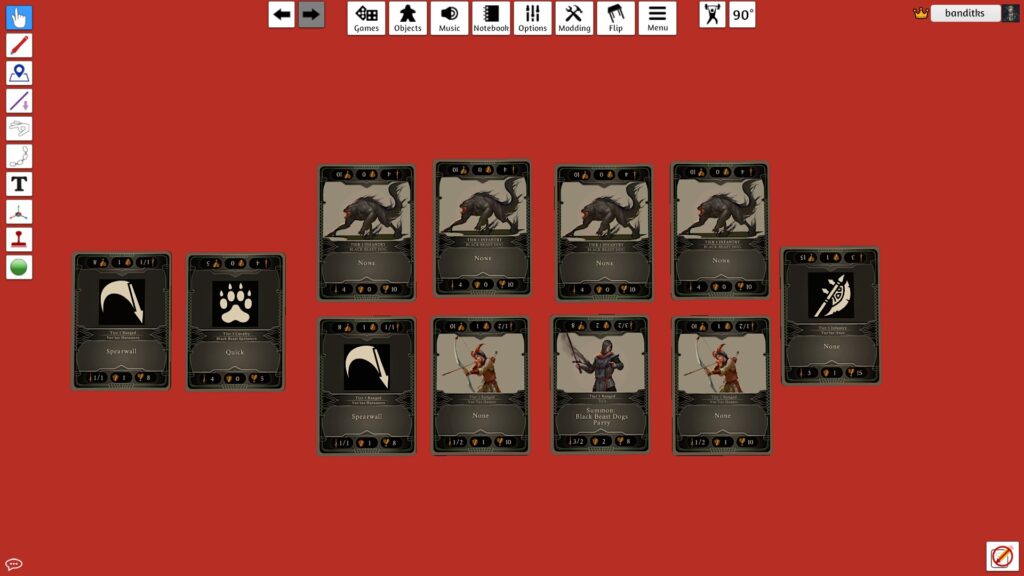
So now you’re asking yourself the question – who do you invite to battle? That guy sitting opposite you has really strong regiments, but lots of Favor. Bringing him in will certainly help win the battle, but push him closer to victory. Then again, maybe you bring him in under the guise of getting help, but secretly hoping his units get sufficiently weakened to make him less powerful. Alternatively you could be talking to the others around the table, explaining that this guy is running away with it, and that maybe you should all work together to share the Favor and reel him in. And you’re definitely trustworthy and won’t double-cross them, right? Right??
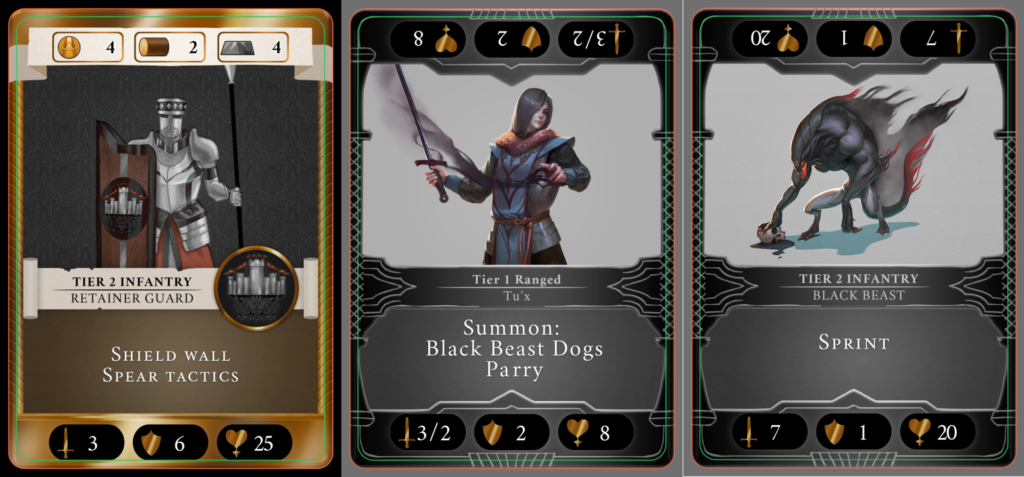
This is where the beauty of The Tu’x Rebellion lies. Not in the clever use of cards for units – which makes setup and tear-down quick, and also makes it easy to see attack and defence stats on the table – but in the meta. This game is all about the discussions around the table, it’s about appearing to work together, working towards the same goal, all the while plotting your own dark machinations.
Campaign trail
The Tu’x Rebellion is a long game, and it’s a game which really needs a regular group of people to get the most out of it. Unless you’ve got a full day to play, you’ll be playing an hour or two, then ‘saving’ and putting it away for another day, like any other big campaign game. I mean, it’s not a campaign game per sé, it feels more like something like Twilight Imperium. Unlike Twilight Imperium however, the co-operative aspect of the game means if one person loses, you all lose, so no-one is sat around like a lemon, with nothing to do.
Matt’s created a really nice card organiser system, which means you can pick up everything you need from the box and have it in front of you and ready to play in minutes. This is not your dad’s wargame, it doesn’t have hundreds of chits to sort and place, or a big board to populate. In fact, there’s no board at all. The game is made up of a plethora of cards and some pads of sheets. The centre of the table is where you create the screen, body and flanks of your armies. Once they’re in place it reminds me of American Football (I’m a big Pittsburgh Steelers fan), with two lines ready to crash into one another while the ranged and flanking units get ready to do their things.
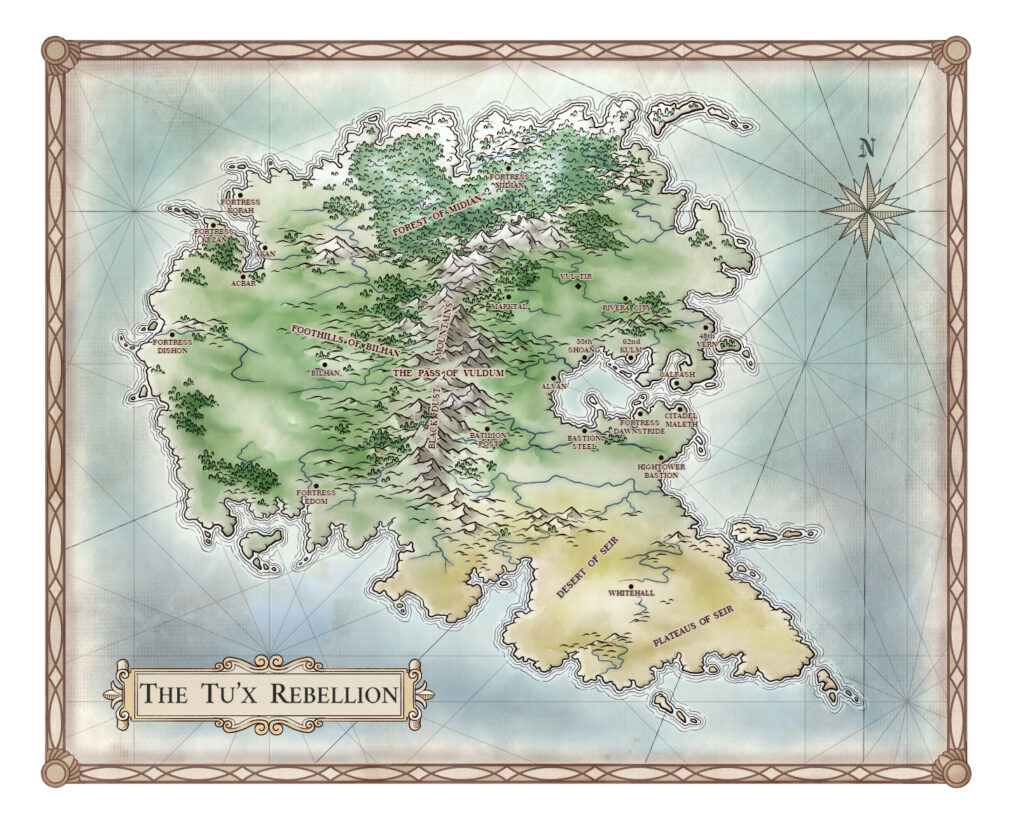
One of the things I particularly like is that Tu’x isn’t too hardcore with its rules when it comes to battle. There’s no battlefield measurements, no fog of war, no line of sight. The rules about who can attack who are really simple, and it keeps play ticking along quickly. Battles still take a while to resolve, and a lot of consideration, but it’s quicker than it otherwise would have been.
Final thoughts
I really enjoyed my time with The Tu’x Rebellion. I get nervous when I read-up about games, and start counting mechanisms which leave me wondering how they’ll integrate. A wargame that also throws in resource management and tableau-building could have fallen flat on its face, leaving it more like The Homer than a magical Liger. I’m really happy to say that this game is the latter. The Draw and Build phases really feel like a traditional Euro, and the battles feel something like Magic: The Gathering or Hearthstone, but with buckets of strategy thrown over them.
War-gamers might read the above and consider it sacrilegious, the way I’ve dumbed-down the war aspects, but as I said right at the top, I come at this as a dyed-in-the-wool Euro gamer. When you bear that in mind, remember that I really enjoyed The Tu’x Rebellion. Even without all of the final art, and with that clunky TTS interface making it feel like trying to play a board game with a crane machine, I can tell that this has the potential to be a very good game.
I can’t talk about its longevity or balance, because I simply haven’t played it enough yet. There certainly seems to be longevity baked-in with the various factions available, and their unique units and play styles. I’ve talked to Matt and watched his videos, and it’s very obvious that a lot of time and effort has been put into the game, so I’d be extremely surprised if the game suffers from any imbalance. If you’re looking for a simple, play-in-an-hour game, this isn’t it. But if you’re looking for something more towards the epic end of the scale, with multiple plays with a group of regular friends, I could see this finding a spot in your collection.
The Tu’x Rebellion will go live on Kickstarter in the coming months. For more information please visit their Facebook page or head over to their Discord server and say hi.
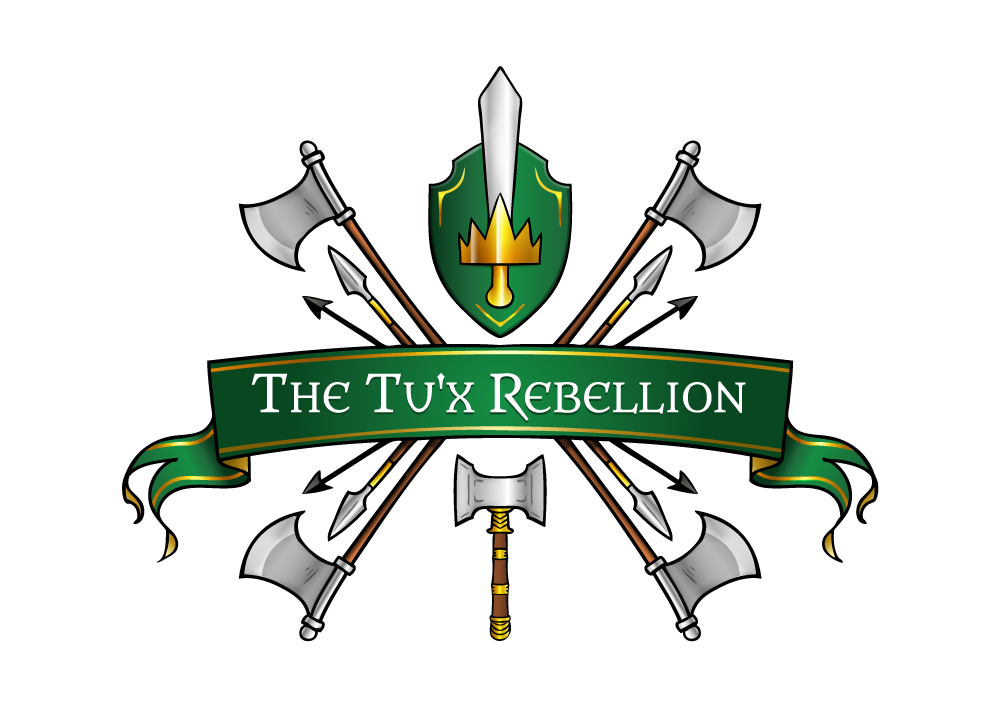
The Tu’x Rebellion (2021)
Designer: Matt Hanna
Publisher: Maniple Games
Art: Various
Players: 2-4
Playing time: 600-1000 minutes (120-180 minute sessions)

Thank you for this review of T’ux Rebellion. I am glad to know the battle system and rules make the battles approachable and fun for people who do not consider themselves war-gamers. Cosmic Encounter is also my favorite board game.
No problem at all, best of luck with the campaign!